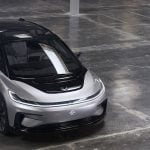
Automakers and technology companies claim that there are a lot of upsides to autonomous vehicles. Reducing traffic is one those things that makes self-driving vehicles so attractive. Previous research has proven that even one autonomous vehicle can reduce the amount of traffic, but current research proves that the opposite could be true.
Last May, researchers from the University of Illinois published a study that revealed autonomous vehicles can reduce the amount of traffic on roads. In really congested areas, only one autonomous vehicle can make a large difference. The lead researcher of the study, Daniel B. Work, found that by automating five percent of vehicles on the road could end traffic that’s caused by human error.

More Traffic Because Of Lower Ride-Hailing Prices
While that study might be true, The Washington Post, citing a new study conducted by the World Economic Forum and the Boston Consulting Group, claims that autonomous vehicles could actually increase traffic in urban areas. If you’re wondering how that’s possible, the outlet states that it’s all about supply and demand. Suburban areas, though, are a little different and could see traffic decrease with the rise of autonomous vehicles.
To obtain its findings, the World Economic Forum and the Boston Consulting Group conducted 10 months of research and completed an extensive survey on driverless cars. The two organizations found that as companies like Uber and Lyft adopt autonomous vehicles, prices will go down for their services. Lower prices will draw more consumers to their services, especially those that use other forms of mass transit to get around. While that’s good for Uber and Lyft, it could lead to more traffic.
“If it’s the same price or only slightly more, plus I don’t have to walk to the station, I don’t have to worry about carrying an umbrella, I don’t have to check schedules, I don’t have to connect, why would anyone take the train? Said Augustin Wegscheider, one of the report’s authors.
If you’re still wondering how lower prices might lead to a 5.5 increase in congestion in downtown Boston, it’s because these and other ride-hailing companies will replace private cars with a fleet of their own machines.
“You might have fewer vehicles on the road, but the vehicles that are on the road are operating 12 hours a day,” said Wegscheider. “The average car in Boston is operated for something like 12 minutes a day.”

Ride-Hailing VS Mass Transit
Usually, Uber and Lyft drivers operate their privately-owned vehicles for specific hours of a day. They work a few hours here, a few hours there, and during peak times on weekends and holidays. While a few drivers may be working 12-hours shifts, the majority of them don’t.
The study, according to Wegscheider stated, reveals “that unless you put the right policies in place to actively manage the adoption of [autonomous vehicles], congestion might actually get worse.”
It makes sense, as Lyft, Uber, and other ride-hailing companies will have more customers using their services. Because of the nature of autonomous vehicles, they’ll also have more vehicles running all-day on roads. Clearly, these two things will cause for more traffic.
The only way for autonomous vehicles to decrease traffic in congested areas, is if ride-hailing customers choose to share their rides with strangers.
“One of the answers is getting more people in the car,” said Wegscheider. “If you ask consumers, ‘Would you do that?’ they say, ‘Hell, no, I’m not going to share a car with strangers,’ but if it costs $2 instead of $7, the say, ‘Okay.'”

What About Suburbs?
Congestion may rise in urban areas, but the study found that the situation won’t be the same in suburbs. The thing in rural areas is that individuals don’t use mass transit as much as individuals in urban areas do. There, ride-hailing services “will mainly replace the use of personal cars rather than mass transit, and travel time will decrease by 12.1 percent.”
“There, the trade-off is instead of sitting in traffic for a 10-mile trip and dealing with it myself and paying $30 for parking in the city every day, I could invest those thirty dollars in the ride service and use the time productively,” said Wegscheider.
The issue of a ride-hailing service versus a train isn’t that big of a problem in rural areas as it is in cities. Going from a suburb to an urban area will still cost more, which means that the majority of people will still choose to take mass transit into the city. That means that mass transit won’t compete with ride-hailing service for traffic like they do in urban locations.
“If I take the train for an hour now for $6, even if the Lyft price comes down from $80 to $40 [for the same trip], it’s still a trade-off between $40 and $6,” Wegscheider said. “People will still ride the train.”
How Do Americans Feel About Autonomy?
The organizations’ study also involved a survey that was completed by 5,500 drivers in 27 cities. The survey found that approximately 50 percent of Americans stated that they wanted to ride in an autonomous vehicle. Other respondents from around the world showed a lot more interest in driverless vehicles. In China and India, 75 to 85 percent of people claimed that they are interested in riding in a driverless vehicle.
The rich car culture in America is one of the prime reasons for the stark difference in the way drivers in the U.S. look at autonomous vehicles. “Some people would go from walking or mainly riding a bike to an autonomous vehicle,” said Wegscheider, “rather than a person who grew up in the suburbs of Detroit who says, ‘I’ve been driving all my life.'”
Lyft and Uber’s switch to autonomous vehicles is inevitable, as it means larger profits for the companies. For consumers, it means cheaper prices and more congestion for those loving in urban areas.
[“Source-futurecar”]





